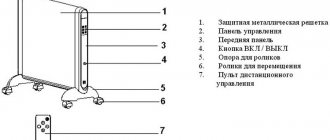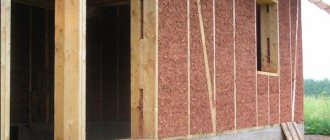Heating equipment is regularly improved by designers, which allows manufacturers to produce attractive solutions for a wide variety of performance characteristics. For example, most consumers are interested in compact convector-type devices. They are distinguished by their small size, original design style and ergonomics, but at the same time, such devices are not able to fill large rooms with heat. For such cases, it is recommended to use diesel heaters, also called heat guns. These are more massive units that require regular fuel filling, but at the output they provide high heat transfer with minimal financial costs.
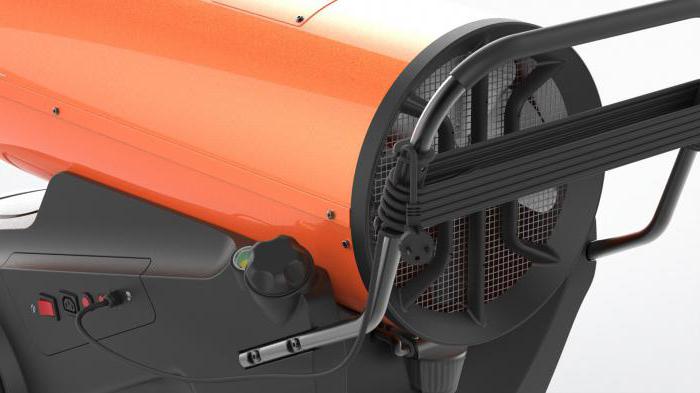
General information about diesel heat guns
At first glance, the design of such a heater may seem overly complicated and impractical. While the same convectors and radiators are almost invisible wall panels, diesel heaters include several working components, including a combustion chamber, a fuel tank, a fan and several communication channels. The multi-component structure is due to the principle of operation, the effectiveness of which just justifies the design flaws.
During operation, fuel is burned with heat generation. A fan is used to dissipate the generated heated air currents - it must be directed to the target area. Actually, such a principle of operation led to the second name of the unit - a heat gun. An important advantage of the equipment is independence from energy sources. As a rule, a standalone diesel heater does not require a power supply from the mains, since its function is provided by energy from the combustion chamber. However, there are also combined models, in which the fan is separately supported by electricity.
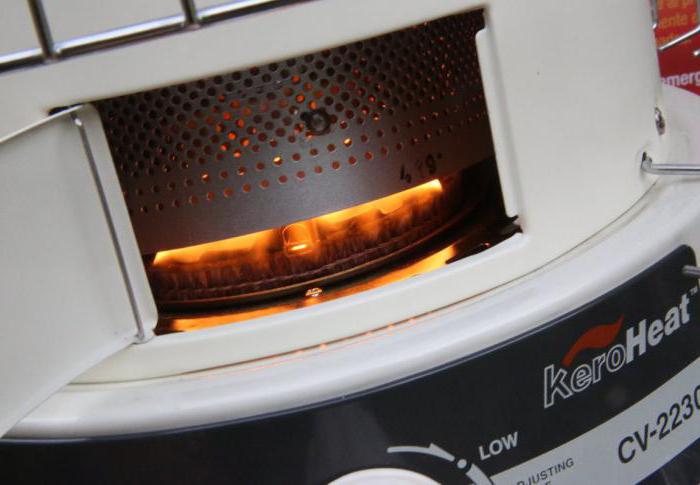

Other selection criteria
- Air exchange. This indicator is important for heat guns. The higher it is, the more powerfully the device accelerates the flows, which means that it heats up the room faster.
- Fuel consumption. A key indicator of profitability. Roughly, 100 grams of fuel should provide 1 kW of power, or 1 liter - 10 kW.
- Direct and indirect action. Direct-acting heaters require enhanced ventilation, since combustion waste is not removed here. They cannot be used in small confined spaces. Indirect devices are equipped with a filtration system, but they are not as economical as the first ones.
- Change of modes. It is extremely inconvenient for heating if the heater is capable of operating with constant power. If it is possible to adjust the heating intensity, this is not only convenient, but also saves fuel (some devices with minimal heating can work up to 14 days without refueling).
- Timer. It will allow you to turn on intensive heating for a short time, followed by turning off the device without human intervention.
- Noise level. The hum from the diesel heater is inevitable. If this indicator is important, it is necessary to clarify in the data sheet exactly how much Decibel the model produces (an indicator of 45 dB can be considered good).
- Wheels. Most large appliances are equipped with wheels. The ability to block them will be useful. In addition, in the characteristics it is worth looking at what load they are designed for.
When choosing a heater for the home, many prefer the practicality of its use. In this regard, quartz heaters for the home have shown themselves well with an efficiency equal to almost 100%.
Let's talk about the features of choosing a ceramic heater for your home here.
In the field, comfort is also important, especially if you have to spend the night in a tent. In this article, we will consider which tent heater is better to choose.
Basic selection parameters
Thermal power is a key parameter to be guided by during the selection. And here it is important to carry out the correct calculations of the ratio of power and area of the room. To begin with, it should be noted that the main array of diesel heat guns has a potential of 10 to 100 kW. The calculation is made in this way: 1 kilowatt is able to provide about 10-12 cubic meters of heat. m. That is, a 10 kW unit will be enough for a small house. But much of the efficiency of the equipment will also depend on the performance. The power base of the fan installation is already responsible for this parameter.
Diesel heaters, which direct air at a speed of 250-300 m3 / h, are considered the best solution for private houses. If we are talking about technological heating of a specific area within the framework of the production process, then this value increases. And if, in addition to the combustion chamber, an electric motor is provided in the design, then it is important to initially assess the power supply needs of the installation, that is, to determine the number of phases. Single-phase models are powered from a 220 V power supply, and more powerful three-phase models are powered from 380 V.
Which diesel stove should you choose?
When choosing a garage oven that is powered by diesel fuel, a number of characteristics should be taken into account, such as the power of the stove, the material of manufacture, the ability to use at different times of the year, the price factor, etc.
Criteria
Power
Based on these data, and knowing the area of \ u200b \ u200bthe premises of your garage, you can calculate what kind of stove you need to purchase or manufacture.
Manufacturing material
Such devices are made mainly of steel - metal sheets and corners using welded joints. There are also homemade drip-type ovens, which are made from pipes or old gas cylinders.
The lower hemisphere of such a cylinder is used as a bowl where combustion takes place, and the fuel tank is removed from the body, diesel fuel is dosed to the flame through a metal tube, which excludes spontaneous combustion.
Price factor
Prices for diesel heaters for a garage are quite low, as well as for diesel fuel or fuel oil, and every motorist has used oil at hand. From an economic point of view, such a heating device would be the best option.
Other points
- An important point is the presence of a viewing window (plug) at the stove. This allows you to control the combustion process and increase or decrease the supply of the air mixture to the compartment where the fuel is combusted.
- By their dimensions and installation method, diesel ovens can be both large stationary and small portable. The choice here is huge and everyone can choose a unit based on their specific needs, goals and objectives.
Varieties of diesel heaters
It is possible to conditionally divide the entire range of diesel heaters by areas of application. Thus, the usual indoor, industrial, automobile and suburban models will be highlighted. Indoor rooms are small in size and often provide for a combined principle of energy supply - this allows you to minimize the amount of harmful emissions. Industrial units are characterized by high power, dimensions and can also be powered from the mains - as a rule, 380 V.
Diesel car interior heater is also widespread, which, on the contrary, has a modest design and low power. The heat output of automobile "guns" rarely exceeds 6 kW.They have their own characteristics and models, designed for use in conditions remote from the city. These are suburban units, in the creation of which the emphasis is on autonomy and complete independence from the power supply.


Safety engineering
When working with a diesel heat gun, there are no such stringent requirements as for gas heaters. But there are safety regulationsthat should be observed.
- Use only diesel or kerosene to operate the diesel cannon to avoid explosions and fires.
- Do not operate the device in the presence of gasoline vapors or other flammable substances in the air.
- The minimum safe distance from surrounding objects is at least 3 m.
- The garage must be ventilated.
- If the device operates from the mains, you must not connect it to a current that is different from the permissible. The latter are indicated on special tags. Alternatively, only use a grounded outlet.
Diesel heat gun users note the high quality of heating. Many are satisfied with the speed at which the room is warming up. But also note that worth paying attention on the model and responsibly choose the device. For these reasons, the purchase of a diesel heater is best done with the help of a store clerk.
Don't be afraid to demand performance checks and compliance with technical requirements. And remember that if you have the appropriate skills, you can also assemble a diesel heat gun with your own hands.
How to use a diesel indirect heating gun for a garage, look at the video:
With a direct or indirect principle of operation?
This is a fundamental difference in diesel heaters that is important to consider when choosing. The direct operating principle assumes that harmful emissions will be carried out directly into the open space of the working area. That is, in the room where the unit is installed. Such models are used either in open street areas, or in production workshops. For domestic purposes, use indirect diesel heaters. The complete set of heaters of this type includes a filter system and a special branch pipe for the ventilation duct. It is through this channel that waste substances are released, preserving the ecological cleanliness of the working space.


Furnace types
Initially, all stoves are divided into 2 categories: homemade wood-fired garage stoves and factory-made stoves. Therefore, the list of oven types will look like this:
- Fireplace.
- DIY garage oven.
- Buleryan.
- Diesel stove.
- Rocket furnace.
- Oven with a water circuit.
- Electric oven.
- Gas stove.
Fireplace
Almost all men like being uncommon. A fireplace is the most original idea for heating a garage. It will warm both the room and the driver's soul. A suitable fireplace can be purchased in stores or on the Internet. It takes up little space, approximately 1-1.5 sq. meters, and is usually located in the corner of the room. You can also make a fireplace with your own hands. Drawings and instructions will help out the Internet. Ideally, it is advisable to find a specialist who will advise on assembly technologies and help with the acquisition of the correct material. The necessary tool for work is prepared and the process of creating a fireplace begins. Usually the fireplace is "powered" by relatively inexpensive solid fuel - wood.


wood burning fireplace
DIY garage oven
There are two simplest ovens, which do not require extra special skills to make: a "potbelly stove" made of sheet metal and its brick counterpart. The main difference is the material of the products. The advantages of these stoves:
- Ease of manufacture and operation.
- Cheap fuel is wood.
- Good savings in materials.
The main points in the assembly of the "potbelly stove".The necessary material is purchased: sheet 5 mm metal, chimney pipes with a diameter of 150-250 mm, a grate, hinges for the door. A tool is being prepared: a welding machine (for rent), a grinder with cutting discs, a standard set of driver's tools (hammer, tape measure, pliers, and so on). A drawing diagram of the product is made. The approximate size of the stove is 600 (length) * 400 (width) * 500 (height without legs) mm. The height of the legs is 200 mm.
The grinder cut out blanks from metal sheets according to the drawing. The furnace structure is welded from the finished parts. Taking into account the requirements of fire safety, the floor and walls are prepared for the installation of the "stove" and a hole is cut in the roof for the chimney. The manufacturing process ends with the installation of the stove and the installation of the chimney.
Important: the firebox doors are located on the opposite side of the vehicle.
The technology for erecting a brick oven is practically the same as that of the "stove", but with some differences:
- Material - fireclay bricks, fireclay clay, cast-iron doors for the furnace and blower.
- The key tool is buckets, trowel, electric mixer, grinder with diamond disc, standard set.
- Layout is made in ½ brick. Therefore, the dimensions of the furnace are as follows: 900 (length) * 550 (width) * 900 (height) mm. Chimney pipe dimensions: 400 * 400 mm.
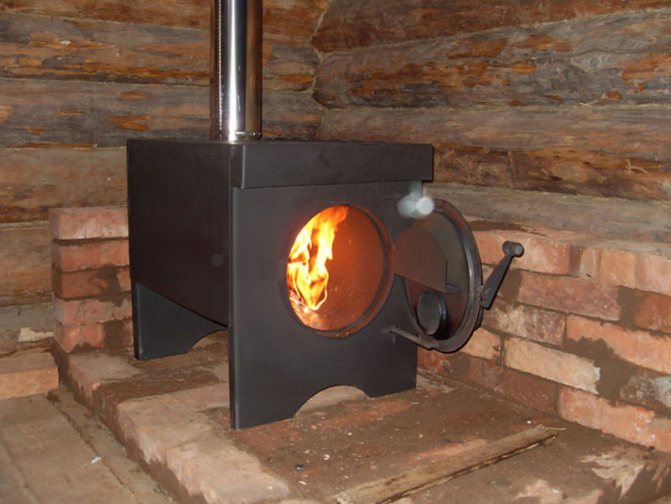

potbelly stove
Buleryan stove for garage
Buleryan is a modern modification of the "potbelly stove", a long-burning stove. Has established itself as "excellent" and has become one of the best options for a garage.
The advantages of this heater:
- Powered by wood and wood debris.
- Has increased efficiency.
- One portion of fuel is enough for 6-8 hours.
- Rapid heating of indoor air - less than one hour.
- Easy to install.
- Small dimensions of the product.
The device of the furnace is simple: almost the same "stove", equipped with convection tubes for rapid heating of the air.
The installation must be carried out taking into account the fire safety rules. A heat-resistant, solid platform must be installed under the stove. On the sections of the walls located directly next to the stove and the chimney pipe, a heat insulator is mounted. When installing the oven, the doors should be facing away from the machine.


Principle of operation
Diesel stove
The differences between a diesel stove and the aforementioned heaters are in the absence of a chimney and in the use of a fundamentally different type of fuel - diesel (liquid). A diesel oven for a garage has a number of advantages:
- Small size.
- Mobility - the ability to locate the device anywhere in the room.
- Profitability.
- Easy to operate.
But there are also disadvantages:
- Odor and soot.
- The room should be well ventilated, since a lot of oxygen is required for fuel combustion.
- Less safety in comparison with "stoves".
A diesel heater for the garage is commercially available. You can also make the device yourself. The Internet will help you with step-by-step instructions for creating stoves.


Diesel stove
Rocket furnace
A rocket stove with a jet thrust is one of the ideal options for long burning wood burning stoves for heating a garage, as it has a wide range of advantages:
- Maximum fire safety due to the absence of an open flame.
- Quite high efficiency: 90-92%.
- Excellent economy thanks to complete combustion of the fuel.
A distinctive feature of the garage rocket stove is waste-free use of fuel. That is, during the combustion of firewood, the heat received does not go outside the premises, because the combustion process takes place in two stages: the main combustion and the afterburning of the remaining gases (pyrolysis).


scheme of work
Oven with a water circuit
When heating a garage with a heater with a water circuit, the coolant is water or antifreeze.This heating method is rare due to its complex design. The furnace is equipped with a heat exchanger for heating the heat carrier (tank or coil). From the heat exchanger there are two pipes: supply and "return". The supply pipe is led to the first radiator. And the return pipe to the latter. Thus, a vicious circle is obtained, called a heating circuit.
For faster heating of the room, a circulation pump is installed in the return pipe, which accelerates the movement of the coolant along the line. It will not be superfluous to install an expansion tank, which protects pipes from rupture when the coolant is heated.


scheme of work
Electric stove
Electric stoves include the following devices:
- Oil radiators.
- Convectors.
- Heat fan guns.
- Infrared heaters.
A significant advantage of electric heaters is their ease of use. And an equally significant disadvantage is the high electricity bill.
Gas oven
Gas heaters are divided into several types:
- Gas cannons.
- Convection heaters.
- Infrared catalytic and ceramic.
- Gas fireplaces.
A gas stove for a garage has a number of advantages: ease of use, fuel efficiency and quick air heating. The main disadvantage is the increased fire hazard.
Oil-fired oven
A waste oil stove deserves special attention, as it is the worst option for heating a garage. An open flame makes such a stove the most unpredictable and fire hazardous.


Furnace components
What is the difference between a diesel infrared heater?
If in conventional fan models heat dissipation is carried out by directed supply of air flows, then in infrared equipment this problem is solved with the help of special emitters. With the help of reflective elements, the same energy supply occurs, but with a different effect. Thanks to active radiators, a diesel infrared heater does not heat the air, but the objects located near it. The principle of such heating has long been recognized as the most efficient and uniform. Already from the objects themselves, the air environment is heated, and the temperature remains longer than with fan heating.


Making a diesel stove with your own hands
A significant part of diesel stoves in garages from motorists, nevertheless, are not purchased, but home-made. Below is an example of a drawing of 2 drip-type furnaces operating on diesel fuel, the first version is made from a gas cylinder and is intended for heating a liquid in a closed circuit, and the second, made from a branch pipe, for air heating of a room.
Diesel stove drawings for a garage
Description of structural components
What is useful for crafting?
The key materials will be steel sheets, corners, pipes for the air channel, fasteners (bolts), a cylinder or a piece of pipe - everything may depend on the imagination and capabilities of the designer. Of the tools you will need:
- Inverter apparatus.
- Angle grinder.
- Carob keys.
- Measuring and marking tool.
back to contents ^
Important manufacturing steps
- First of all, you need to make 4 legs from the corners, their length is 25 - 30 cm.
- By welding, connect them to the lower compartment of the future structure.
- Make two holes for pipes in the upper and lower parts of the stove, the diameter of the lower one must be less than that of the upper outlet.
- Implement welding of the lower pipeline, and also a small piece of the upper pipe under the air duct. It must be removable and allows for convenient cleaning of the furnace boiler.
- Make the process of installing the upper and lower parts of the stove, as well as the pipes for the burner.The flame will burn in the compartment below, fuel will be supplied through the tube, and the upper part will act as a heater.
- In the fuel pipe, it is necessary to make 10 - 12 holes at a distance of 5 cm between them. The first and last holes should be no closer than 10 cm from the body of the diesel stove.
- Make a round window with a diameter of 15 cm in the fuel compartment, connect the plug to it with bolts. With its help, in the process of combustion of hydrocarbons, it is possible to adjust the oxygen supply and draft.
- Install the flue gas vent on the top of the stove, take it out of the room.
Another 1 implementation option
In the video, you can see different implementations of diesel-powered stoves:
Manufacturers and prices
Diesel heat guns can be found from domestic and foreign manufacturers. In Russia, the production of high-quality equipment of this kind is carried out by the specialists "Prorab", "Interskol" and "ProfTeplo". Models of these manufacturers are available on average for 15-20 thousand rubles. A powerful, technological and functional diesel heater is presented by the world famous companies FUBAG, Master, Elitech, etc. These manufacturers specialize in engineering equipment, offering high-quality, but not cheap solutions with an average cost of 40-50 thousand rubles.


Varieties
According to the manufacturing method, there are factory and home-made ovens. Ready-made stoves will cost more, but the buyer of such a unit will save time and money on the independent manufacture of such a device. A diesel stove for a garage is one thing that you should not save on, because it pays off very quickly, you just need to take proper care of it.
According to the heating method, all diesel stoves can be divided into models with direct heating, as well as stoves with indirect heating. Direct heating devices do not have an exhaust gas removal system, so they are not suitable for small rooms, the concentration of CO in the garage will be increased, which can lead to human poisoning with carbon monoxide. Indirect heating devices are in great demand due to their safety, they are somewhat more complex and consist of:
- Fuel tank (powered by diesel fuel).
- Combustion chambers.
- Nozzles and adjustment screws.
- The main building.
The principle of their operation is similar to a diesel engine of a tractor or a bulldozer; from the tank through a nozzle, fuel enters the chamber, where diesel fuel is burned. Further, through the heat exchanger and the nozzle, the heated air enters the heated space.
